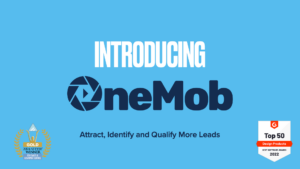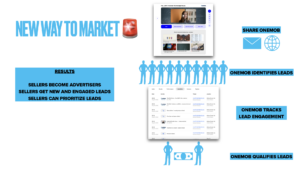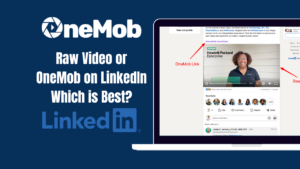With Salesforce Dreamforce now behind us, it’s time to put the knowledge and insights you gained into action. This year’s event was brimming with innovative strategies and technologies that can transform the way you approach sales. In this blog post, we’ll discuss the top three strategies you should consider implementing to enhance your sales process and drive success.
See a demo in action at https://onemob.com/salesforce.
1. Embrace the Single Pane of Glass: Streamlining the Sales Workflow
One of the key takeaways from Dreamforce is the importance of simplifying your sales team’s workflow. To achieve this, embrace the concept of the “single pane of glass.” This means providing your sales team with a unified platform that allows them to navigate their tasks and data seamlessly without the need to jump between multiple tools.
Reduce Clicks and Friction: Every extra click or tool transition creates friction in the sales process. Identify areas where you can reduce these inefficiencies. Integrate your CRM, marketing automation, and analytics tools to create a unified workspace. When your sellers can access all the information they need in one place, they’ll be more efficient and focused on closing deals.
2. AI for Personalized Experiences, Not Dehumanization
Artificial Intelligence (AI) is undoubtedly a game-changer in the world of sales, but it’s essential to remember that it’s about enhancing human interactions, not replacing them. As you implement AI-driven strategies, keep the following in mind:
Personalized Touchpoints: AI can help you deliver highly personalized experiences to your prospects and customers. Leverage AI to understand customer preferences, predict their needs, and recommend tailored solutions. Whether it’s personalized emails, product recommendations, or content, make sure your customers feel like you understand their unique requirements.
Maintain Human Connection: While AI can automate many tasks, it’s crucial to maintain the human touch in your interactions. Use AI to handle routine tasks, allowing your sales team more time for meaningful conversations and relationship-building. Customers appreciate genuine interactions, so don’t let automation compromise that.
3. Measure What You Manage: Data-Driven Sales Strategies
In the world of sales, data is your most valuable asset. If you’re not measuring the impact of your efforts, you’re essentially flying blind. Here’s how you can ensure your sales strategies are data-driven:
Data-Backed Decision Making: Lead with your gut instincts, but back them up with data. Implement robust analytics tools to track key performance indicators (KPIs) and sales metrics. This data will provide insights into what’s working and what needs improvement. Use this information to refine your sales strategies continuously.
Sales Intelligence: Invest in sales intelligence tools that provide real-time data on your leads and prospects. Knowing when a lead has engaged with your content, opened an email, or visited your website can help your sales team prioritize their efforts and reach out at the right time.
A Step-by-Step Guide to Data-Driven Selling
Now that we’ve discussed the top strategies, let’s outline an end-to-end flow to help your sales team effectively use analytics and personalization to boost their success:
- Data Gathering: Start by collecting and organizing data from various sources, including your CRM, website analytics, and marketing automation tools.
- Analytics Implementation: Utilize analytics tools to process and analyze the data. Identify trends, patterns, and areas where your sales process can be optimized.
- Personalization Strategy: Develop a personalized outreach strategy based on the insights from your analytics. Create tailored content, emails, and offers that resonate with each segment of your audience.
- Automation Integration: Integrate AI and automation tools to streamline routine tasks, such as lead nurturing, follow-ups, and appointment scheduling.
- Measure and Refine: Continuously monitor your sales performance using KPIs and data-driven insights. Adjust your strategies based on what the data tells you.
By embracing these strategies and following the step-by-step guide, you can empower your sales team to navigate the evolving landscape of modern sales successfully. Remember that success in sales is an ongoing journey that requires adaptability and a commitment to leveraging technology and data to drive results. As you implement these strategies, you’ll be better equipped to sell smarter, not harder, and achieve your sales objectives. See a demo in action at https://onemob.com/salesforce.







